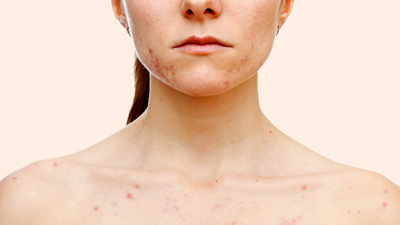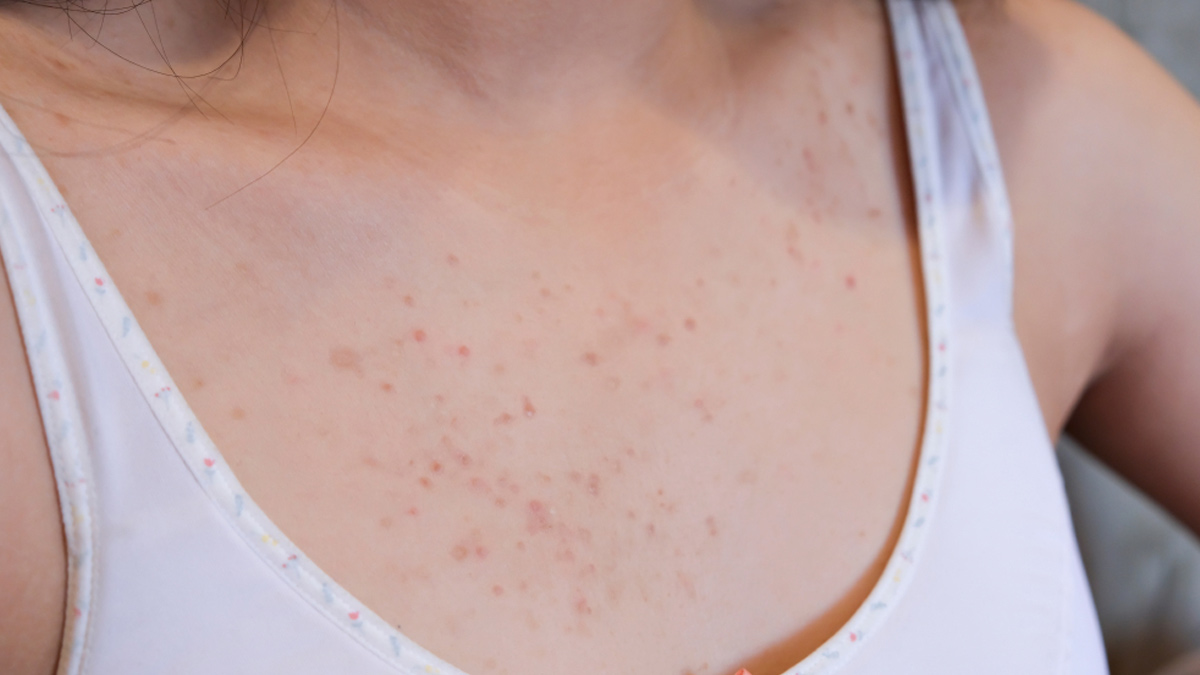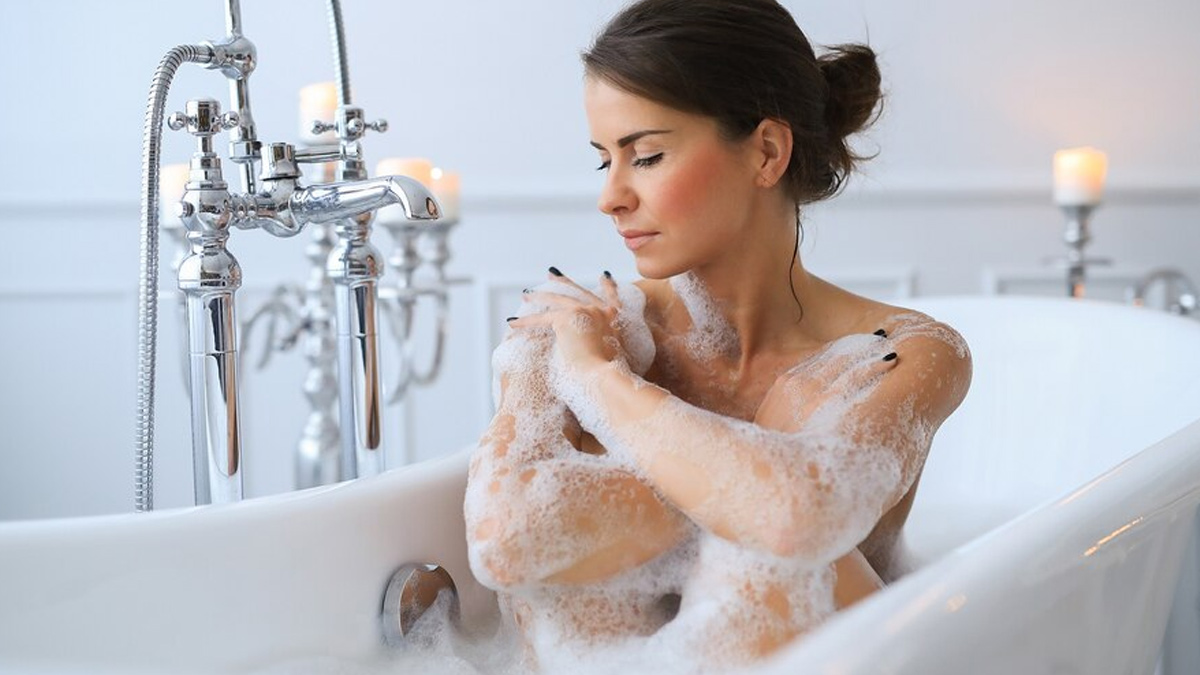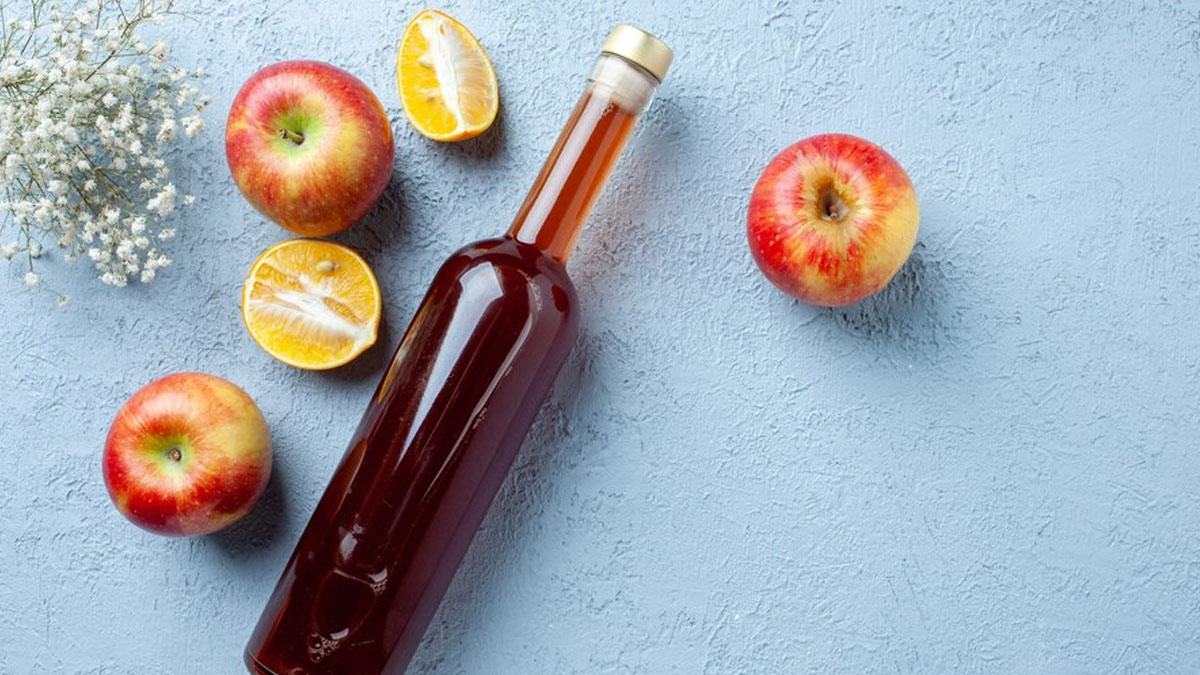
Acne is not just limited to the face but can occur in any part of your body including your chest. It can be a frustrating skin condition affecting many individuals and may even hamper their self-confidence. By understanding the underlying causes of chest acne and implementing effective home remedies, you can take proactive steps towards achieving a smoother, blemish-free chest. In this article, we list the causes of chest acne and how to get rid of it.
Table of Content:-
Causes of Chest Acne

- Hormonal Changes: Fluctuations in hormone levels, especially during puberty, menstruation, pregnancy, or menopause, can trigger chest acne.
- Excessive Sebum Production: Overproduction of sebum by the sebaceous glands can clog pores and lead to acne formation.
- Poor Hygiene: Sweat, dirt, and oil buildup on the chest can contribute to the development of acne if not properly cleansed.
- Friction: Wearing tight clothing or carrying heavy backpacks can create friction against the chest, leading to irritation and acne.
- Diet: Certain foods high in sugar, dairy, or processed ingredients may exacerbate acne flare-ups for some individuals.
Also Read: Unveiling The Gut-Skin Connection: An Expert's Guide to Understanding and Clearing Acne
Home Remedies for Chest Acne

Gentle Cleansing
You should wash your chest area twice daily with a mild, non-comedogenic cleanser to remove dirt, sweat, and excess oil. Avoid using too much pressure when cleaning your skin since it can aggravate acne.
Tea Tree Oil
Tea tree oil is known for its antibacterial and anti-inflammatory properties and can help reduce acne lesions. All you need to do is dilute tea tree oil with a carrier oil, such as coconut oil, and apply it to the chest using a cotton ball.
A study published in 2017 suggests that the application of tea tree oil gels and face washes could potentially be beneficial for addressing mild to moderate acne.
Salicylic Acid
Products containing salicylic acid can effectively unclog pores and reduce acne inflammation. Hence, look for over-the-counter creams or washes with salicylic acid as an active ingredient and apply them to the chest area as directed.
Also Read: Clear Skin Guide: 5 Benefits of Salicylic Acid in Your Skincare Routine

Apple Cider Vinegar
You can even dilute apple cider vinegar with water and apply it to the chest using a cotton ball as a natural toner. Apple cider vinegar has antibacterial properties and helps balance the skin's pH level.
Benzoyl Peroxide
Benzoyl peroxide kills acne-causing bacteria and helps dry out excess oil. Apply a thin layer of benzoyl peroxide cream or gel to the affected areas of the chest, but be cautious as it may cause skin dryness or irritation.
Aloe Vera
Another remedy to treat chest acne is aloe vera gel. Its anti-inflammatory qualities can aid in reducing acne-related redness and inflammation. According to the International Journal of Natural Therapy, it was found that aloe vera might enhance the immune system's reaction to inflammation, potentially leading to a decrease in the visibility of acne scarring.
Exfoliation
Regular exfoliation helps remove dead skin cells and prevent clogged pores. Use a gentle exfoliating scrub or a soft brush to exfoliate the chest area once or twice a week.
Moisturise
Use a lightweight, oil-free moisturiser to keep the skin hydrated without clogging pores. Look for moisturisers labelled 'non-comedogenic' to avoid aggravating acne.
Clean Bedding and Clothing
You should wash bedding, towels, and clothing regularly to prevent the buildup of dirt, oil, and bacteria that can contribute to chest acne.
Stress Management
Practice stress-reducing techniques, such as meditation, yoga, or deep breathing exercises to help manage stress levels, which can exacerbate acne flare-ups.
[Disclaimer: This article contains information for informational purposes only. Hence, remember to be patient and consistent with your skincare routine, and consult a dermatologist if your acne persists or worsens despite home treatment efforts.]
Also watch this video
How we keep this article up to date:
We work with experts and keep a close eye on the latest in health and wellness. Whenever there is a new research or helpful information, we update our articles with accurate and useful advice.
Current Version